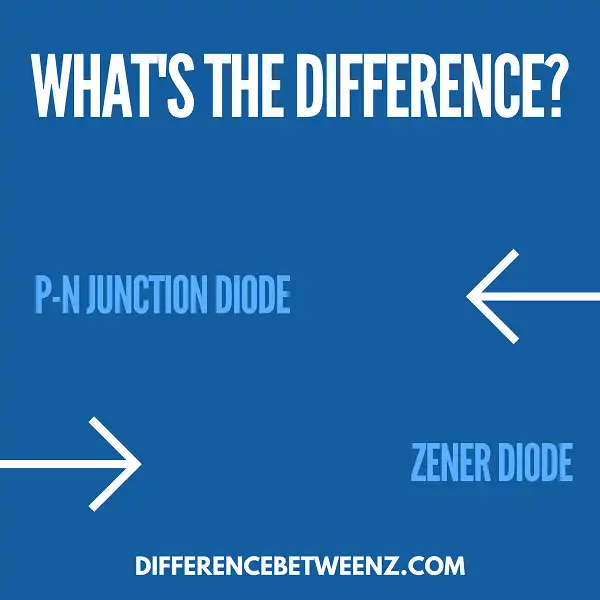Diodes are one of the most common electronic components. There are two main types of diodes: P-N junction and Zener diodes. While they both serve similar purposes, there are some key differences between them. In this post, we will take a closer look at these two types of diodes and highlight the key differences between them. We will also discuss when each type of diode is best used. So, let’s get started!
What is P-N Junction Diode?
P-N junction diode is a two-terminal electronic device made from semiconductor materials. The device has P-type and N-type semiconductor materials connected together to form a P-N junction. When the P-type and N-type materials are connected together, the P-N junction forms an electric field that allows current to flow through the diode in one direction only.
The P-N junction diode is the most basic type of semiconductor device and is used in a wide range of electronic devices, from solar cells to diodes. P-N junction diodes are also used in optical communications, as well as in power supplies and voltage regulators.
What is Zener Diode?
Zener diodes are unique in that they allow current to flow in the reverse direction when the voltage is above a certain level. This “breakdown voltage” can be precisely controlled, making Zener diodes ideal for use as voltage references. Unlike standard diodes, Zener diodes do not have a sharp breakdown voltage.
Instead, they have a relatively flat voltage-current characteristic curve. This means that they can maintain a stable voltage across a wide range of currents. Zener diodes are also relatively insensitive to temperature changes, making them well-suited for use in temperature-sensitive applications.
Difference Between P-N Junction Diode and Zener Diode
The p-N junction diode is a two-terminal device made of P-type and N-type semiconductor materials. P-type material has extra holes while N-type material has extra electrons. Holes are the vacant spaces in the valence band where electrons can jump to the conduction band.
- Electrons are elements that can flow through the conductor. The P-N junction diode is used to control the current flow as it allows only unidirectional current flow. A Zener diode is a P-N junction diode that has been designed to operate in the reverse breakdown region.
- In this region, the Zener diode conducts from P to N type giving uniform voltage drop across it known as the Zener voltage. The value of this voltage is constant for a particular Zener diode for a given temperature.
- The P-N junction diode conducts when there is a forward potential difference applied across its terminals whereas the Zener diode starts conducting when there is a reverse potential difference greater than the breakdown voltage or Zener voltage applied across its terminals.
When we talk about P-N junction diodes, it’s mainly used for rectification purposes whereas Zener diodes are used for voltage stabilization. P-N junction diodes can be used as switches too but they’re not as efficient as transistor switches. On the other hand, Zener diodes are widely used as voltage stabilizers. That’s why you see them in most power supplies these days.”
Conclusion
A Zener diode can be used as a voltage regulator, while a P-N junction diode cannot. If you need to protect your circuits from damage caused by an excessive input voltage, then you should use a Zener diode. If you need to convert AC current into DC current, or if you just need to direct traffic on your circuit boards, then you should use a P-N junction diode.


